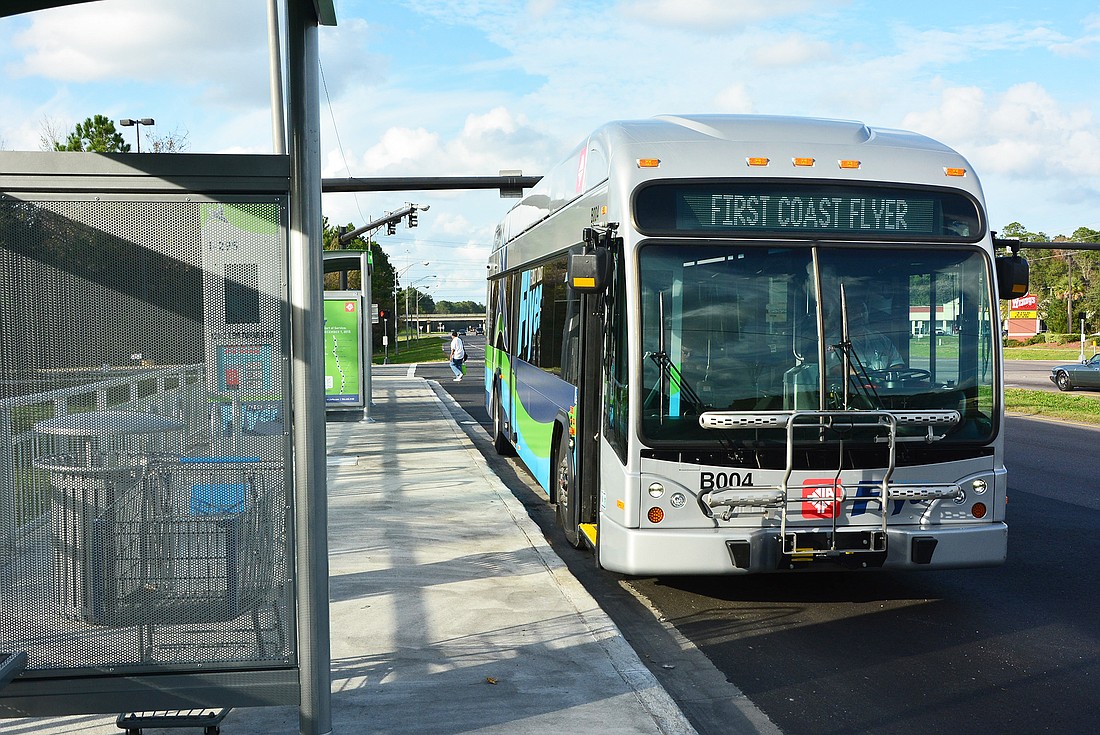
Jacksonville Transportation Authority officials are looking at mixed-use development on its surplus properties as a way to increase ridership and they’re searching for partners. The authority’s main sales pitch: Build near public transit infrastructure.
To make it happen, JTA is in the market for a real estate professional. A request for proposals closes Thursday in support of JTA’s effort to expand its real estate department, focused on finding development partners for six of its surplus properties.
JTA announced its “Transit-Oriented Development” strategy during its annual State of the JTA meeting in May.
All of Jacksonville’s independent authorities own surplus property. JEA opened sealed bids Tuesday for the former Coggin Pontiac site at 9201 Atlantic Blvd., but bids didn’t reach the $4.04 million appraisal and the public utility rejected the offers.
But the JTA’s plan isn’t to sell its land. It is seeking developers to partner with, calculating that an increase in population density and foot traffic near its First Coast Flyer bus stops, Skyway stations and in areas more dependent on public transportation will bring growth.
“The plan right now is joint development rather than right out selling the property,” said David Cawton, JTA media and public relations manager. “Increasing ridership is at the heart of everything we do right now.”
According to the JTA Real Estate Department, long-term leases for joint development would be “preferable.” Officials say it would allow for overall lower project costs and more dense developments.
In an email Wednesday, Cawton wrote that JTA already has received “several inquiries from interested parties.” Officials see that as a signal that offers for joint development could soon follow.
Three of the properties are Downtown and Cawton says, like City Hall, JTA is “hyperfocused” on LaVilla.
The authority’s new Jacksonville Regional Transportation Center, opening in the historic neighborhood early next year, also is the bus hub. JTA officials aim to take advantage of the mix of low-income, workforce and market-rate housing projects completed or in development in the area.
The 2.46 acres at 201 S. Union St., where the Rosa Parks Transit Station now sits, will maintain a Skyway station, as well as another bus route after the majority of the traffic is rerouted to the JRTC.
In their pitch for 1.54 acres of property on Johnson Street adjacent to the JRTC, authority officials say a mix of residential development and retail can take advantage of “nearly 95 percent” of the city’s transit routes in the hub next door.
Although JTA will be pushing for joint development in most cases, some instances, like the Rosa Parks parcels, could be different, officials said, “due to the size of the property, development product and property features, proximity and use of transit.”
Developers interested in these two properties would be able to work within the LaVilla Redevelopment Strategy — recently released and approved by the Downtown Investment Authority — qualifying some projects for city incentives.
JTA officials also see the transit infrastructure as a tool to increase property values and make for a “more viable development.”
“We think a denser Downtown with people close to work, close to transit hubs will increase ridership,” Cawton said. “We want more people in Downtown, but in order to do that, you have to have access to public transportation. By having these pockets connected to public transportation they won’t have to drive as much.”
A second active RFP is asking for expertise in transit-oriented development to help JTA define guidelines and stipulations for developers it partners with. JTA officials want to ensure any mixed-use development on its property sticks with their goal of bringing riders to JTA.
“As far as other areas of concern, we’re going to let the market dictate that — what (the properties) should be. We think good, strong, transit-oriented development is mixed-use as it makes sense for those particular neighborhoods,” Cawton said. “We’re not real estate developers, we’re a public transportation authority.”